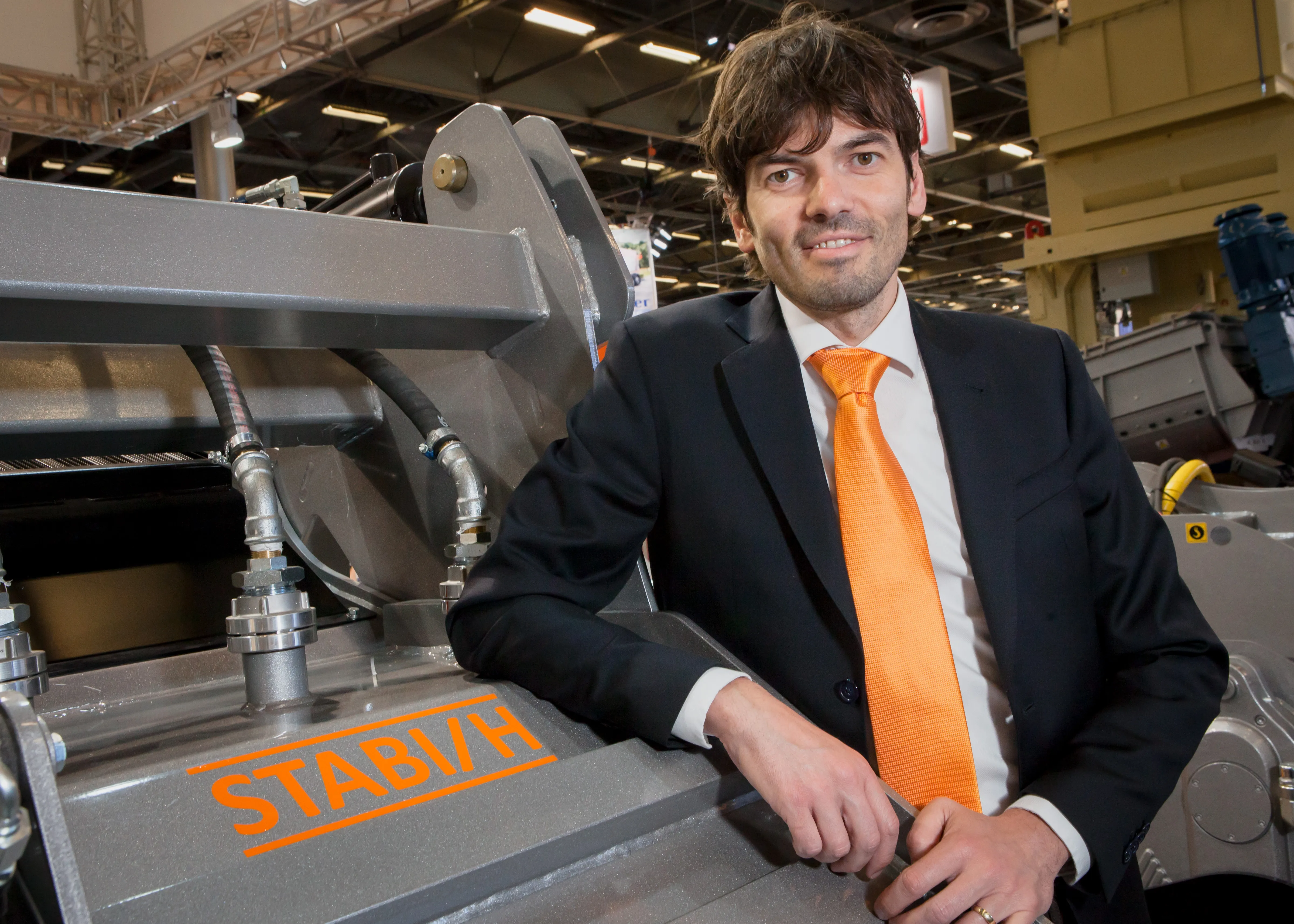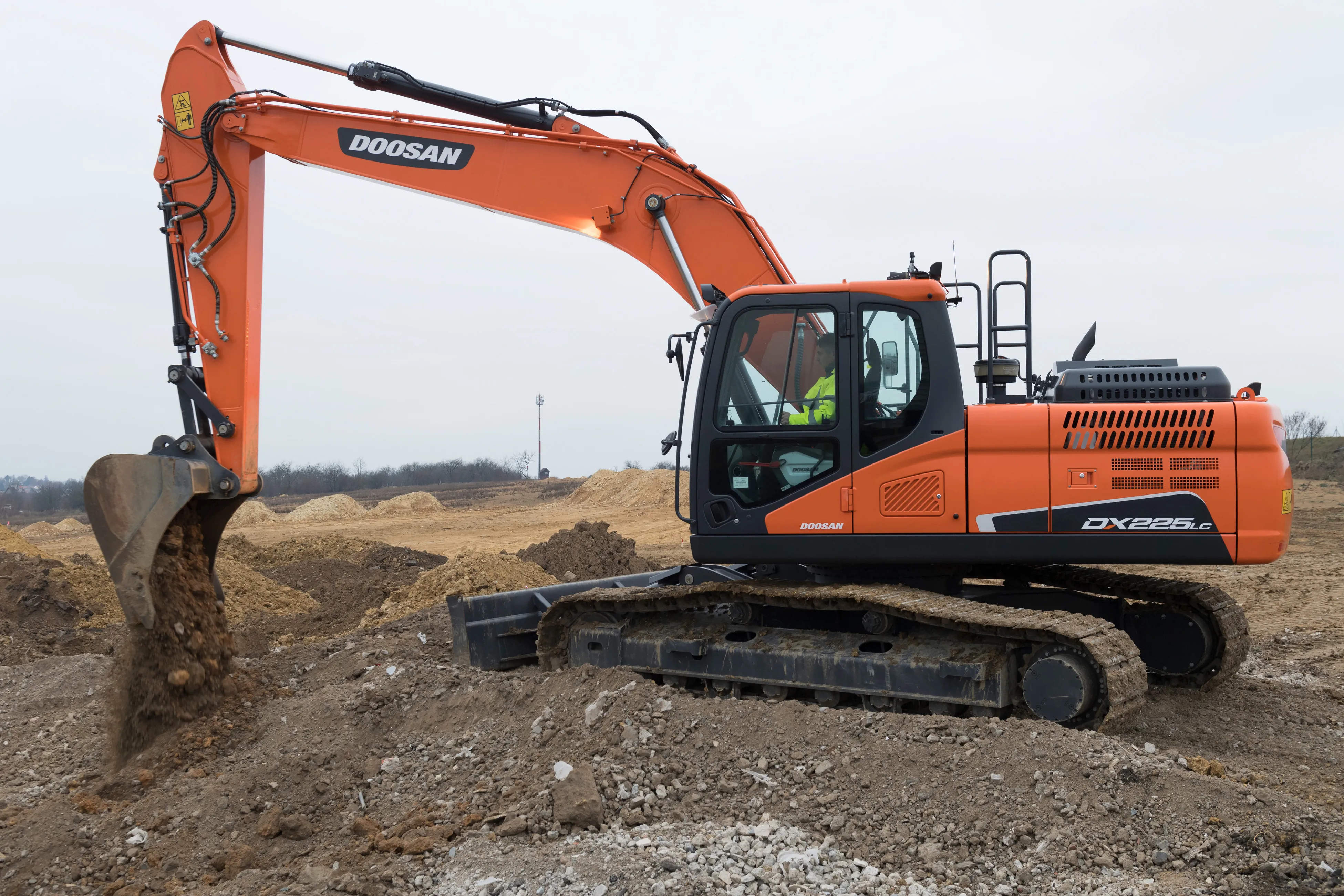Italian firm FAE Group is offering a range of innovative technologies for road stabilisation, with new developments coming to market. Diego Scanzoni is president of FAE Group: “What is really new is the big STABI H soil stabiliser. It’s the sole machine on the market with this kind of solution.”
Scanzoni explained that the STABI H features a novel variable geometry cutter system. He said, “We can control the stabilisation depth and maintain the quality of mixing. This machine can reach a working depth of
April 22, 2015
Read time: 2 mins

Italian firm 8067 FAE Group is offering a range of innovative technologies for road stabilisation, with new developments coming to market. Diego Scanzoni is president of FAE Group: “What is really new is the big STABI H soil stabiliser. It’s the sole machine on the market with this kind of solution.”
Scanzoni explained that the STABI H features a novel variable geometry cutter system. He said, “We can control the stabilisation depth and maintain the quality of mixing. This machine can reach a working depth of 50cm, is equipped with our FAE rotor technology and can be fitted with a different tooth solution, depending on what the customer needs.”
The machine needs to be pulled by a tractor with a power rating of at least 186kW. He said, “All the wear parts of the machine are interchangeable and made with wear-resistant steel or have tungsten carbide inserts welded in. All the frame is made from structural steel to save weight.”
Twin cylinders control working depth and the unit features a special FAE gearbox and cooling system to optimise performance, with drive supplied through a toothed kevlar belt. Scanzoni continued, “Every machine is equipped with water injection and it has the new AIS automatic injection system. With this system the operator can control all the important parameters of the machine using the display in the cab.”
He said parameters can be adjusted using the display such as flow rates or switching nozzles on and off, while the system also offers options for different languages and units of measurement. Working information can then be downloaded on a USB to record all daily working parameters, with GPS logging of position data to be added in the future as well. Scanzoni added, “As with all FAE machines we take care of maintenance so the machine is easy to access and service.”
Scanzoni explained that the STABI H features a novel variable geometry cutter system. He said, “We can control the stabilisation depth and maintain the quality of mixing. This machine can reach a working depth of 50cm, is equipped with our FAE rotor technology and can be fitted with a different tooth solution, depending on what the customer needs.”
The machine needs to be pulled by a tractor with a power rating of at least 186kW. He said, “All the wear parts of the machine are interchangeable and made with wear-resistant steel or have tungsten carbide inserts welded in. All the frame is made from structural steel to save weight.”
Twin cylinders control working depth and the unit features a special FAE gearbox and cooling system to optimise performance, with drive supplied through a toothed kevlar belt. Scanzoni continued, “Every machine is equipped with water injection and it has the new AIS automatic injection system. With this system the operator can control all the important parameters of the machine using the display in the cab.”
He said parameters can be adjusted using the display such as flow rates or switching nozzles on and off, while the system also offers options for different languages and units of measurement. Working information can then be downloaded on a USB to record all daily working parameters, with GPS logging of position data to be added in the future as well. Scanzoni added, “As with all FAE machines we take care of maintenance so the machine is easy to access and service.”









